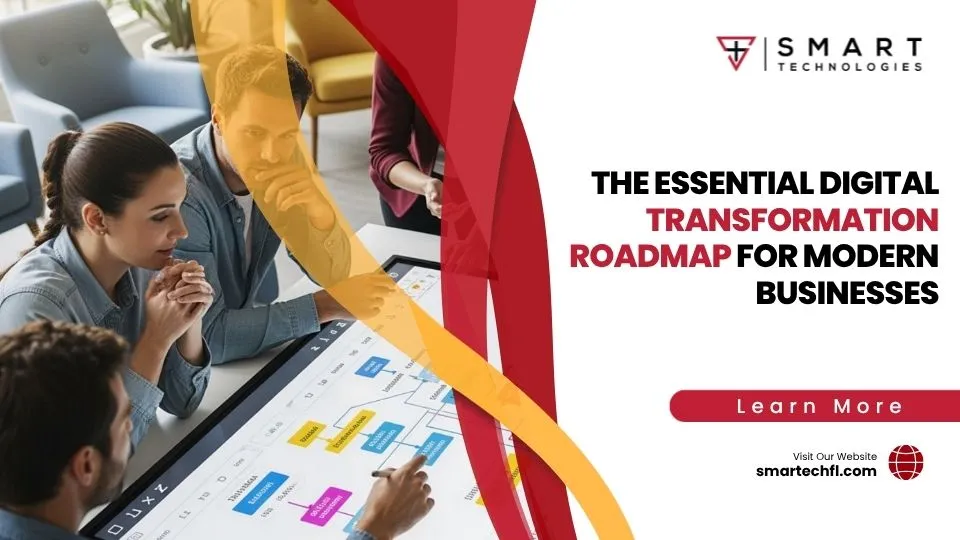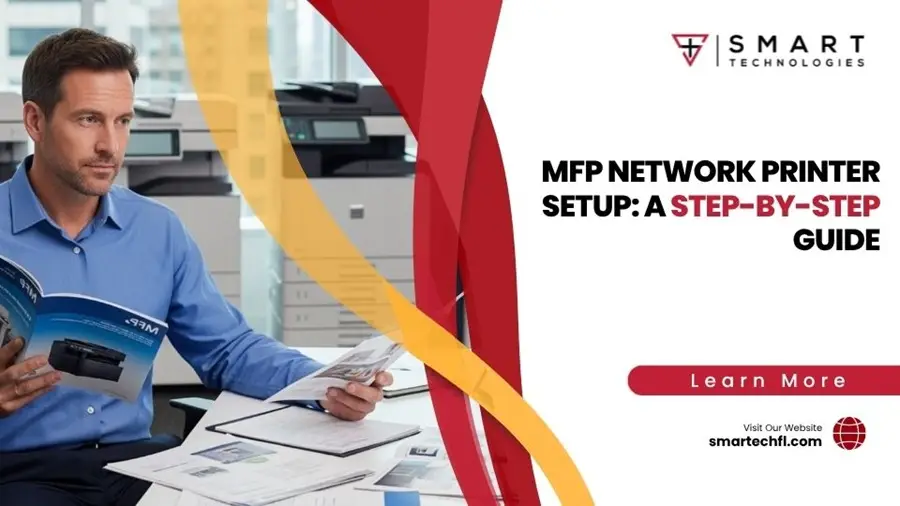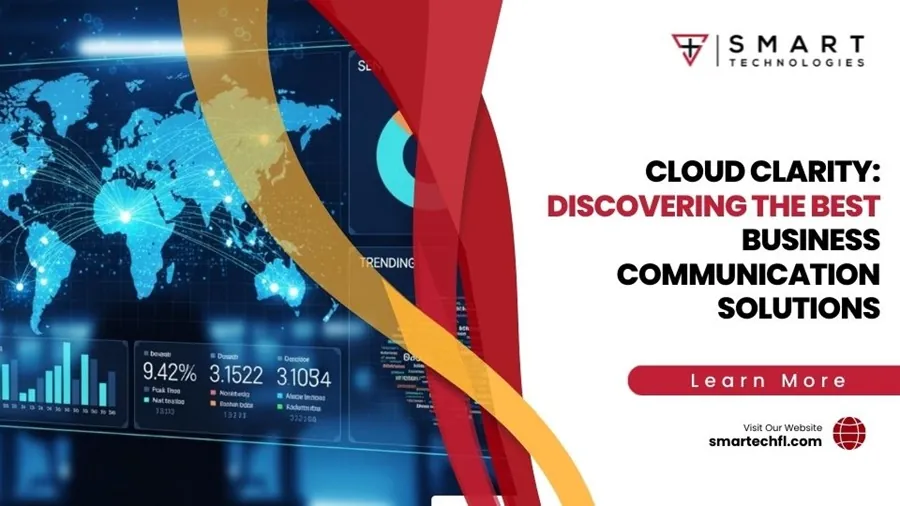Service with a Smile: Best IT Service Management Solutions Reviewed
IT service management solutions are platforms that help organizations design, deliver, and improve their technology services. These solutions transform IT from reactive firefighting into a strategic business partner.
Quick Overview: What ITSM Solutions Provide
- Centralized service delivery: A single platform for all IT requests and incidents.
- Process automation: Automated workflows for faster issue resolution.
- Business alignment: IT services that directly support business goals.
- Cost reduction: Streamlined operations and reduced downtime.
- Improved user experience: Self-service portals and faster response times.
As one IT manager shared: “The right ITSM platform provided frictionless ways for colleagues to handle their IT; it removed a lot of mundane tasks and made onboarding new colleagues much easier during a time of rapid growth.”
Organizations using ITSM solutions report significant efficiency and productivity gains, reduced costs, and improved customer experiences. For mid-sized businesses, these tools transform IT from a necessary expense into a strategic advantage.
The challenge isn’t whether you need ITSM, but choosing the right solution. Platforms range from comprehensive enterprise suites to specialized tools, with some focusing on AI-powered automation, others on unified service and asset management, and many offering customizable workflows.
This guide examines the top IT service management solutions to help you understand which features matter most for your business needs.
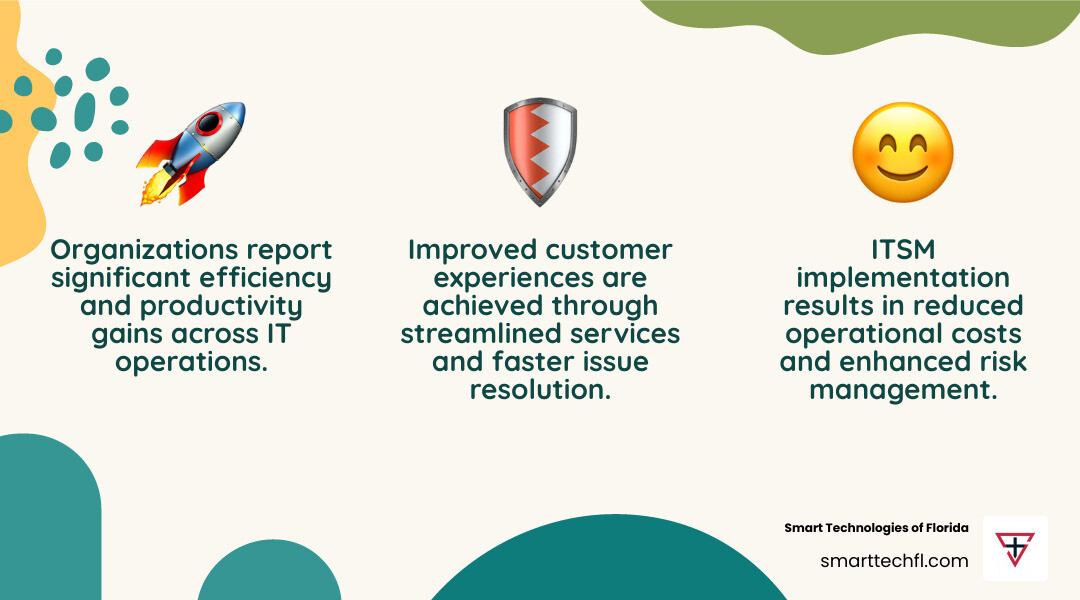
The Foundation: Understanding Core ITSM Components and Processes
IT service management (ITSM) is a strategic approach that transforms IT from a reactive support function into a proactive service delivery engine aligned with business goals. Unlike traditional IT support, which focuses on fixing problems as they arise, ITSM aims to prevent issues and optimize the entire service experience.
This service-centric approach is built on several core processes:
- Incident Management: Restores normal service operations as quickly as possible after an unplanned interruption.
- Problem Management: Identifies the root causes of incidents to prevent them from recurring.
- Change Management: Controls the lifecycle of all changes to minimize disruption to IT services.
- Knowledge Management: Creates and shares knowledge across the organization to improve efficiency.
- IT Asset Management (ITAM): Manages the lifecycle of all IT hardware and software assets.
For organizations looking to strengthen their technology foundation, you can find more info about our IT Infrastructure Solutions Guide.

The Role of the Service Desk
The Service Desk is the Single Point of Contact (SPOC) between the IT department and users. It’s the central hub for managing incidents and service requests. A modern Service Desk provides:
- Efficient request fulfillment and incident resolution.
- Clear user communication on the status of their requests.
- Self-service portals and a knowledge base to empower users to find answers and resolve issues independently, reducing the IT team’s workload.
Integrating IT Asset Management (ITAM)
Integrating IT Asset Management (ITAM) with your ITSM platform is crucial for efficiency. It provides complete visibility into your hardware and software assets, which is essential for security, compliance, and cost management.
When ITAM is connected to your service desk, technicians gain immediate context for any ticket. This linking of assets to tickets allows them to see a device’s history, warranty status, and configuration, leading to faster issue resolution. A Configuration Management Database (CMDB) maps the relationships between assets, further enhancing a technician’s ability to diagnose and solve problems effectively.
The Blueprint: Popular ITSM Frameworks and Methodologies
ITSM frameworks provide a proven roadmap for IT service delivery, offering standardized practices and procedures that help organizations move from reactive firefighting to proactive service management. These are not rigid rulebooks but flexible blueprints designed for continuous improvement and adaptation to your unique business needs.
More info about our approach to IT Management.
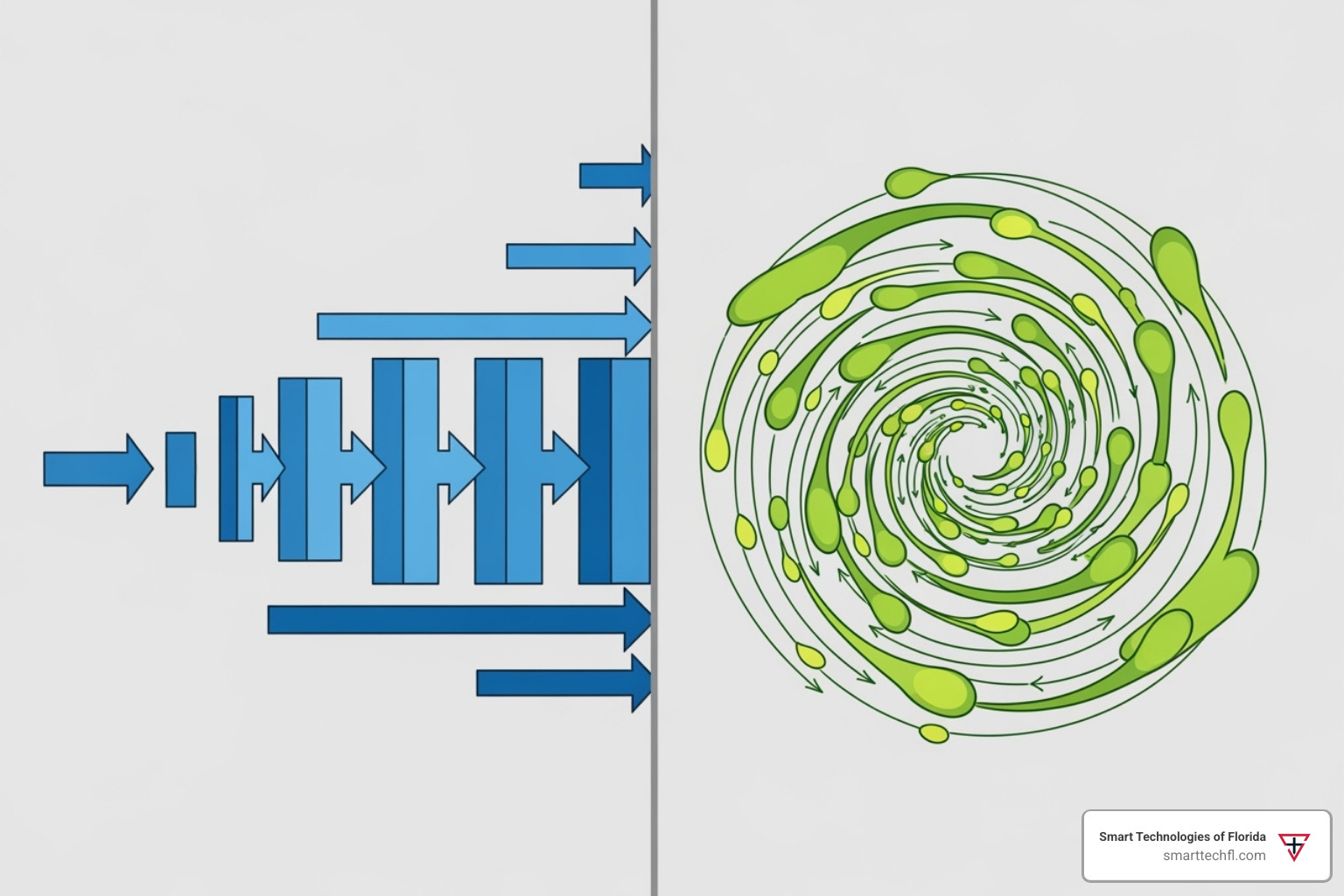
ITIL: The Most Widely Accepted Approach
ITIL (Information Technology Infrastructure Library) is the most globally recognized framework for ITSM. It offers a set of flexible best practices focused on aligning IT services with business needs.
The latest version, ITIL 4, emphasizes a holistic, business and customer-value frame of reference. It encourages organizations to co-create value with customers and focuses on guiding principles like focusing on value, starting where you are, and progressing iteratively with feedback. By shifting from rigid processes to flexible “practices,” ITIL 4 helps organizations adapt its guidance to their specific culture and requirements.
DevOps: Bridging Development and Operations
While ITIL provides structure, DevOps brings speed and agility. DevOps is a cultural change that breaks down silos between software development and IT operations teams, promoting collaboration and automation.
By creating shared responsibility for the entire software delivery pipeline, DevOps enables accelerated delivery of high-quality, reliable applications. The most successful organizations don’t see ITSM and DevOps as competing approaches; they integrate both methodologies. Combining ITIL’s governance with DevOps’ agility creates high-velocity IT teams that deliver exceptional service while driving continuous innovation.
The Toolkit: Essential Features in Modern IT Service Management Solutions
Modern ITSM platforms have evolved beyond simple help desks into comprehensive ecosystems. When choosing a solution, it’s crucial to understand the different types and the features they offer.
The landscape includes core ticketing solutions, AI-powered platforms, unified service and asset management suites, and highly customizable solutions.
Here’s how these different approaches compare across key feature categories:
| Feature Category | Core Ticketing Solutions | AI-Powered Solutions | Unified Platforms | Customizable/Scalable Solutions |
|---|---|---|---|---|
| Core Functionality | Incident/Request Management, Basic Reporting | Automated Routing, Predictive Analytics, Chatbots | Integrated ITAM, CMDB, Configuration Management | Flexible Workflows, Custom Fields, API Integrations |
| Automation | Basic Workflow Automation | AI-driven Task Automation, Self-healing | Automated Asset Findy, License Management | Rule-based Automation, Scripting |
| User Experience | Simple User Interface, Email Integration | Conversational AI, Self-service Guided Resolution | Centralized Service Portal for IT & Assets | Tailorable User Interfaces, Branding |
| Insights & Reporting | Standard Reports (e.g., ticket volume) | AI-driven Performance Insights, Bottleneck Prediction | Asset Utilization, Compliance Reporting | Custom Dashboards, Advanced Analytics, BI Tool Integration |
| Integrations | Email, Basic Directory Services | Messaging Apps (Slack), CRM, Monitoring Tools | RMM, Endpoint Security, HR Systems | Wide Range of APIs, Pre-built Connectors |
Matching these capabilities to your needs is key. For comprehensive guidance on selecting the right technology, explore our IT consulting services.
Core Ticketing and Incident Management
Solid incident management is the foundation of any ITSM strategy. Key features include:
- Ticket prioritization to automatically categorize requests based on business impact and urgency.
- SLA management to monitor response and resolution times and escalate issues to meet commitments.
- Automated routing to assign tickets to the right technician based on skills and availability.
- Root cause analysis capabilities to identify patterns and prevent recurring incidents.
Automation and AI-Powered IT Service Management Solutions
AI is changing ITSM by automating routine tasks and predicting problems. Look for:
- AI-powered chatbots that can troubleshoot common issues and guide users through procedures.
- Predictive analytics that analyze data to spot potential failures before they happen.
- Automated task resolution for handling repetitive work like password resets and software installations, freeing up skilled technicians for strategic projects.
Unified Platforms for Service and Asset Management
Integrating service and asset management provides a complete picture of your IT environment. These unified platforms offer:
- Context-rich automation, where the service desk instantly has access to a device’s history, warranty, and configuration.
- Centralized asset tracking for real-time visibility into your hardware and software inventory.
- Seamless integration between service and asset data, which eliminates silos and provides technicians with complete context for faster resolution.
The Strategy: Choosing and Implementing Your Ideal Solution
Selecting the right IT service management solution is a long-term strategic decision. Success comes from finding a solution that fits your unique business needs, culture, and goals. Based on our 23 years of experience, here are the key factors to consider.
First, focus on business goal alignment. What are you trying to achieve? Whether it’s reducing costs, improving compliance, or enabling innovation, your chosen solution must directly support these objectives. Also, consider scalability and integration capabilities to ensure the platform can grow with you and connect seamlessly with your existing tech stack. Finally, prioritize user-friendliness to ensure high adoption rates among both IT staff and end-users.
Implementation Best Practices
A successful implementation requires a careful approach. We recommend these best practices:
- Use a phased rollout: Start with core processes like incident management before moving to more complex areas.
- Secure stakeholder buy-in: Involve key team members from IT and other departments early in the process.
- Provide custom training: Show your team how the new system will improve their daily work.
- Focus on continuous improvement: Treat implementation as an ongoing journey, not a one-time project. Regularly gather feedback and refine processes.
If you need help planning a major technology shift, you can find More info about planning a Business Technology Upgrade.

Key Benefits and Strategic Role of ITSM
A strong ITSM strategy delivers benefits that ripple throughout the organization, making it a cornerstone of digital change. Key advantages include:
- Increased efficiency and productivity: Standardized, automated workflows free up your team to focus on strategic initiatives.
- Reduced operational risk: Structured change and problem management processes prevent outages and improve stability.
- Improved employee and customer experience: A customer-centric approach with self-service options builds trust and satisfaction.
- Data-driven decision making: Comprehensive reporting provides insights for strategic planning and continuous improvement.
ITSM enables business agility. By ensuring IT operations are efficient and predictable, it allows your organization to respond quickly to market changes, support new technologies, and drive innovation, aligning IT with core strategic objectives.
Empower Your Business with Strategic IT Service Management
Adopting a modern IT service management solution is a strategic business decision that transforms IT from a reactive cost center into a proactive, value-driving partner. A well-implemented ITSM strategy improves efficiency and service quality, reduces costs, and aligns technology directly with your core business objectives.
This change requires the right strategy, tools, and implementation partner. At Smart Technologies of Florida, we’ve spent 23 years helping organizations steer these critical technology decisions. Our people-centric approach focuses on custom digital solutions that fit your unique goals, whether you’re in Daytona Beach or beyond. We ensure your technology empowers your team and accelerates growth.
Ready to build a more connected and efficient workplace? Our comprehensive approach extends beyond ITSM. Explore our business communication solutions to see how we can help you create a technology environment that drives productivity and supports your business.
How does ITSM differ from basic IT support?
ITSM is a strategic, holistic approach to managing the end-to-end delivery of IT services to align with business goals. It focuses on proactive processes, continuous improvement, and value creation. In contrast, basic IT support is reactive, focusing on fixing immediate technical issues (break-fix) without a broader strategic framework. ITSM transforms IT from a cost center into a strategic business partner.
What are the first steps to implementing an ITSM strategy?
Start by assessing your current IT processes to identify pain points. Then, define clear business objectives for the implementation. Secure buy-in from stakeholders across the organization, choose a suitable framework (like ITIL), and select a scalable ITSM tool. We recommend a phased rollout, starting with core processes like incident and request management.
How can ITSM tools support compliance and security requirements?
Modern ITSM solutions support compliance through features like detailed audit logging, role-based access controls, and robust change management processes that document every modification to your IT environment. Integration with IT asset management (ITAM) ensures all hardware and software are tracked and secure, which is crucial for meeting standards like SOC 2 or ISO 27001.





